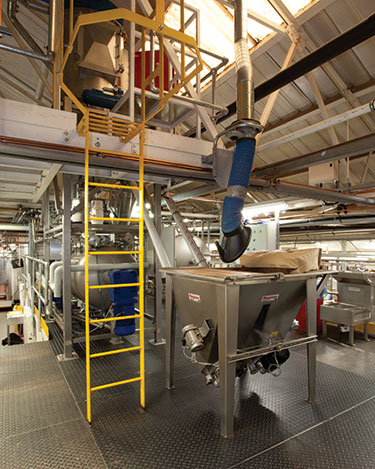 Click to enlarge
Click to enlargeTwo cocoa powders are transferred from the twin hopper through each flexible screw conveyor to the mixer, while sugar enters the mixer from pneumatic receiving hopper above. The entire batching/blending process is controlled by PLC.
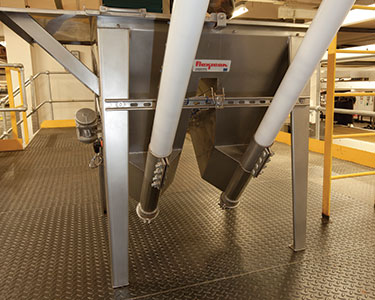 Click to enlarge
Click to enlargeTwo types of cocoa powder are emptied into the twin hopper while dust is removed by vacuum. The two flexible screw conveyors move each powder, alternately, to the mixer.
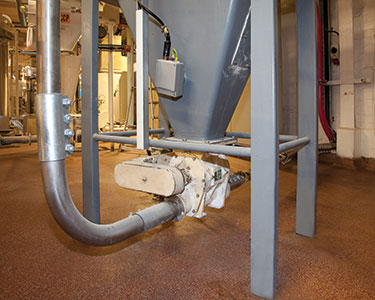 Click to enlarge
Click to enlargeSugar flows from the floor hopper through a rotary valve into 200 m long PNEUMATI-CON® pneumatic conveying line powered by the blower above the hopper.
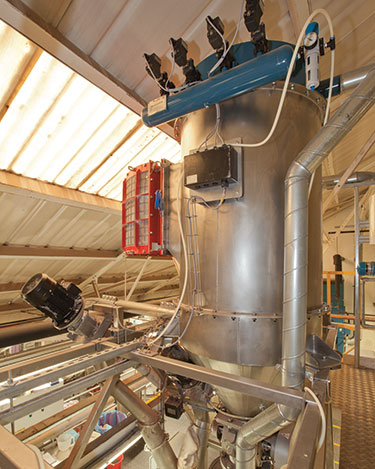 Click to enlarge
Click to enlargeSugar is fed into the mixer below from the 500 kg pneumatic receiving hopper. At left, cocoa powder enters the mixer through the discharge end of the flexible screw conveyor and downspout.
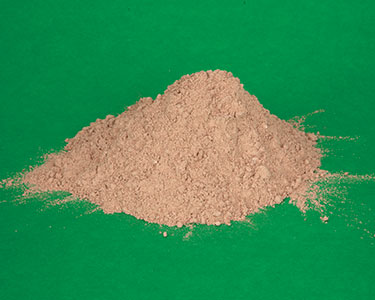 Click to enlarge
Click to enlargeCocoa powder (top) and finely milled sugar (centre) are blended (bottom) in a horizontal paddle mixer before palm oil and liquid chocolate are added to the batch, producing a chocolate cream blend that is pumped to the sandwich production line.
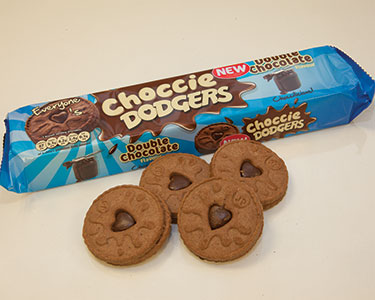 Click to enlarge
Click to enlargeThe batching/blending system produces Burton's new Chocolate Dodgers product.


 Click to enlarge
Click to enlarge Click to enlarge
Click to enlarge Click to enlarge
Click to enlarge Click to enlarge
Click to enlarge Click to enlarge
Click to enlarge Click to enlarge
Click to enlarge